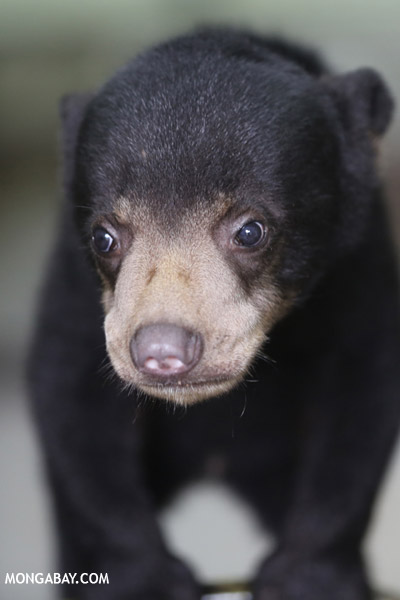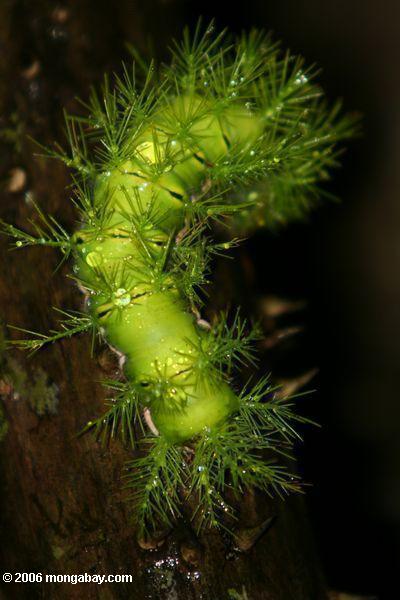Lynx triplets make their appearance at ZSL Whipsnade Zoo
By Natalie Millar At eight weeks old, the three lynx kittens Ruby, Amber and Opal finally made themselves known to the public, playing in the enclosure under the watchful eye of mother, Maja. Lynx litters usually remain inside a den constructed by the female until they’re big enough to venture outside, at around seven weeks old. With their characteristic ear tufts, the playful lynx kittens are frequently spotted napping on logs...
Endangered Malayan tapir baby born at Minnesota zoo
Last Saturday, a female Malayan tapir (Tapirus indicus) was born at the Minnesota Zoo, the first baby tapir for the zoo in over 20 years. “Malayan Tapirs are an endangered species and every birth is important to the population,” said Tom Ness supervisor of the zoo’s Tropics Trail at the Minnesota Zoo, located in Apple Valley. The only tapir species found outside of Central and South America, Malayan tapirs are...
Oh deer: world’s smallest deer born at Queen’s Zoo
By Alexander Holmgren The first week of July marked one of the as the World’s cute as the worlds smallest deer was born in the Wildlife Conservation’s Society Queen’s Zoo. The doe, a member of the endangered Pudu species (Pudu puda) weighs approximately one pound at birth and will only grow up to be twenty pounds as an adult. The Pudu are one of nature’s most extraordinary creatures. The Pudu is the smallest deer species in existence...
Rare ginger monkey born
By Lacey Avery The ZSL London Zoo is home to a newborn François langur (Trachypithecus francoisi), one of the world’s rarest monkeys. Baby Chúa, whose name means “princess” in Vietnamese, is bright orange and described as having a crown-like tuft sticking up on her head. While both parents are black in color, four-week old Chúa’s fiery tinted fur is characteristic of François langur babies and will transition to black in six months to...
Penguins and people alike enjoy the sunset at Whipsnade Zoo
By Brandon Allen The black-footed penguins at the Whipsnade Zoo have a truly enviable spot; perched at the top of the Chiltern Hills, they enjoy a mesmerizing sunset every evening. This view is not unlike the stunning sunsets that black-footed penguins experience along the rocky shores of South Africa and Namibia, their natural habitat. Visitors were able to join the penguins in enjoying the sunset Saturday, June 29th at Whipsnade...
Capturing Wildlife
By Erika Skogg “You conserve what you know, you don’t conserve what you don’t know.” I thought of this biology quote as I photographed along side Fernando, one of the Humboldt Society’s Ornithologist, as he pulled a shimmering green hummingbird out of the mist net. Strung between skinny silver poles around eight feet tall, the black mesh nets hung through the forest trails. They stood parallel to the forest, winding 100 feet down the...
A Chimpanzee Birthday Bash
By Brandon Allen Koko the chimp celebrated her 40th birthday this month at the Whipsnade Zoo in Bedfordshire, England. The zookeepers set out piñatas and wrapped treats, like tomatoes and yogurt, for the beloved chimpanzee. These presents not only help Koko celebrate her birthday but also “keep her stimulated and encourage her to be inquisitive” according to Keeper Kathy Doherty. Koko, the oldest chimp and resident of Whipsnade,...
Jaguars of Guatemala: elusive cats caught on film
By Phyllis Sena The Wildlife Conservation Society captured a photograph of a male jaguar using a remote camera trap, a unique contraption that is activated by motion or heat that takes pictures of animals in the wild that are normally hard to locate because of their elusiveness. Since each jaguar has a unique pattern of spots, the WCS has integrated camera traps into their manual of methods in order to estimate jaguar population in...
Meet the baby kipunji: first photo of little-known monkeys’ offspring
By Brandon Allen A Kipunji (Rungwecebus kipunji) infant was just born in Tanzania this month, an important addition to the critically endangered monkey species. The Kipunji is the first new species of monkey to be discovered since 1923. Originally scientists had assumed that this unique primate was a mangabey, an endangered population of Old World monkeys that live in African rainforests. However, DNA tests revealed that the Kipunji...
Beautiful leviathan: the leatherback sea turtle
By Phyllis Sena The gargantuan leatherback sea turtle (Dermochelys coriacea) is the largest of all sea turtles and according to the IUCN Red List, is also critically endangered with their population declining 90 percent in the past 20 years. This sea turtle got its name by having a soft, leathery textured carapace (top shell) instead of the common hard shell that other turtles have. This enormous species can weight up to 2,000 lbs....
Beautiful Birds of Panama
By Hannah Lindstrom Panama has a total of 972 bird species, of which 20 are considered to be globally threatened. Since the 1940’s, Panama’s tree cover has been reduced by over 50% which is having an effect on the avifauna of the nation. Species in Panama range from Giant Harpy Eagles, Panama’s national bird, to small species of kingfishers, with many in between....
Gummy grin: colobus monkey born at ZSL London Zoo
by Phyllis Sena The ZSL London Zoo welcomes baby Anvil, an Eastern Black and White Colobus monkey who is the new pride and joy of her mother, Sophia. Even though there is a stark contrast when it comes to appearance between mother and daughter, the jet-white newborn will eventually become black and white and better resemble her mother once she gets older. Anvil’s aunty Thumbelina is the only member of the family that is allowed to...
Adorable baby sun bear
by Jemma Smith The Sun Bear (Helarctos malayanus) is the smallest member of the bear (Ursidae) family. A patch on their chest enables them to be individually identified by the size, color and pattern variations between individuals. Very little is known about the sun bear; however, they are believed to be found throughout Southeast Asia, from India to Borneo. Listed as vulnerable on the IUCN’s Red List and are believed to be extinct in...
The howler in the forest
By Phyllis Sena Nicknamed “Howlers”, Howler monkeys are famously known for their deafening calls that can be heard up to three miles (five kilometers) away in the jungles of Central and South America. A cacophony of loud cries can be heard during dusk and dawn in order to send a message to other monkeys that the territory is being occupied by their group. Howlers are also considered to be the loudest land mammal on Earth. Howlers are...
Tiger Cub Caught on Camera
Written by Jemma Smith This image of a 4-5 month old tiger cub was recently captured on a remote camera in the India’s Bhadra Tiger Reserve. The Bhadra reserve was identified by the Wildlife Conservation Society (WCS) as one of 42 ‘source sites’ that are essential for the future of tigers. These sites are found within 9 different countries and are home to 70% of the remaining tiger population; although only make up 6% of their range....
Turtle Hatchling in Costa Rica
By Jordanna Dulaney A Olive Ridley sea turtle (Lepidochelys olivacea) hatchling. The Olive Ridley is named for its olive-colored heart-shaped shell, which changes from dark grey to olive as the turtle matures. Like other sea turtles, the Olive Ridley nests and hatch in tropical waters and then migrate to subtropical areas like the southeastern or eastern central Atlantic. Although it is considered the most abundant sea turtle in the...
Rare Siamese Crocodile’s Hatchlings Released
By Jemma Smith The Wildlife Conservation Society (WCS) has recently released 19 baby Siamese crocodiles into a local wetland in Lao PDR. The eggs of the crocodiles were discovered and collected during a wildlife survey back in 2011, hatched and reared at Lao Zoo as part of the Community-based Crocodile Recovery and Livelihood Improvement Project. The 19 month old hatchings were released near to where the eggs were found into a ‘soft...
Caterpillars in Colombia
by Hannah Lindstrom Caterpillars are the larval form of moths and butterflies. Since these creatures are so rich in protein, they tend to be a favored food source of many species. As a result, caterpillars have developed many a coping mechanism for this issue. Predators can easily be deterred by the appearance or size of a caterpillar. Bright colors, as seen in these pictures, usually makes an animal think poison, so they will tend to...
Rescued Wooly Monkeys in Colombia
Written by Jordanna Dulaney The woolly monkey (Lagothrix lagotricha) is listed as “Vulnerable” on the IUCN’s Red List. In fact, studies predict that the species will decline at least 30% in the coming 45 years. The IUCN cites hunting, habitat loss due to the expansion of farming land, and pet trafficking. These pictures were taken at a rehabilitation center for animals in the pet trafficking trade in Amacayacu National Park, Colombia....
Sea Turtles Released During Earth Hour
Written by Jemma Smith To commemorate this years Earth Hour and raise awareness of turtle conservation, the Chinese organization Sea Turtles 911 released two Green Sea Turtles (Chelonia mydas) back into the wild during this special hour. Earth Hour encourages businesses and households worldwide to switch off their lights for one hour between 8.30pm and 9.30pm on the 23rd of March. This is to raise awareness of climate change. This...

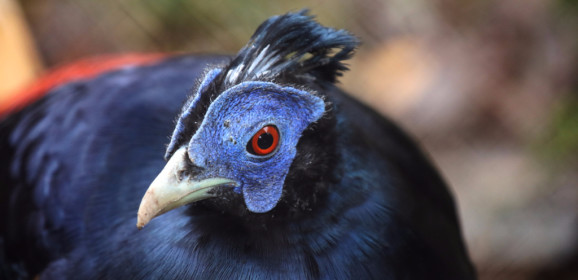

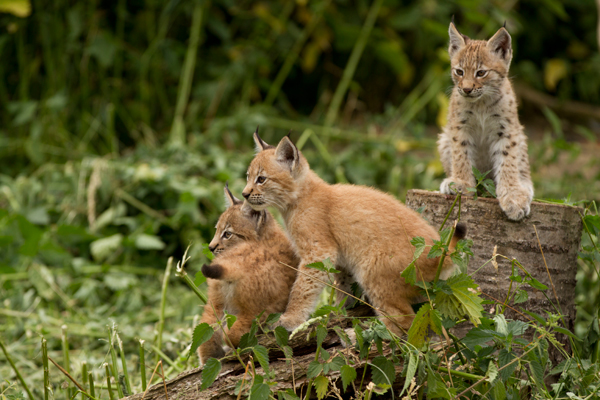



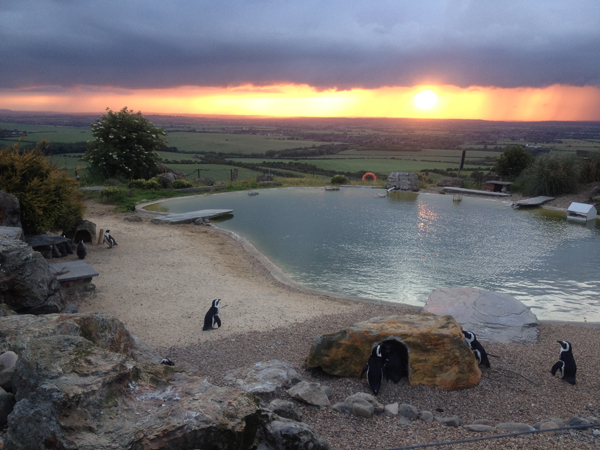
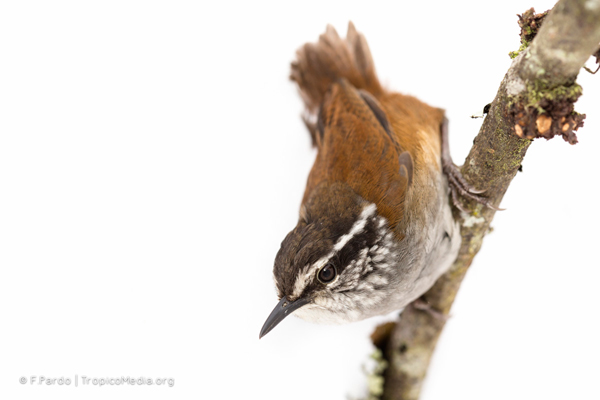


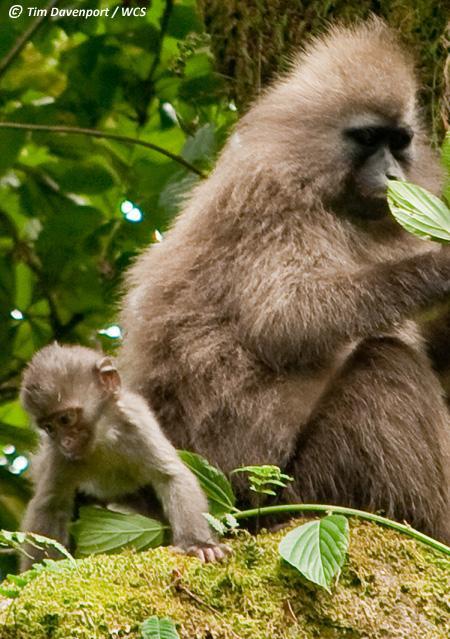

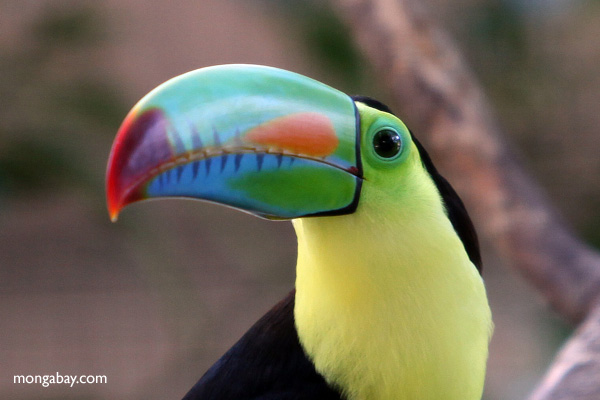
-Joanne-Iredale.jpg)
